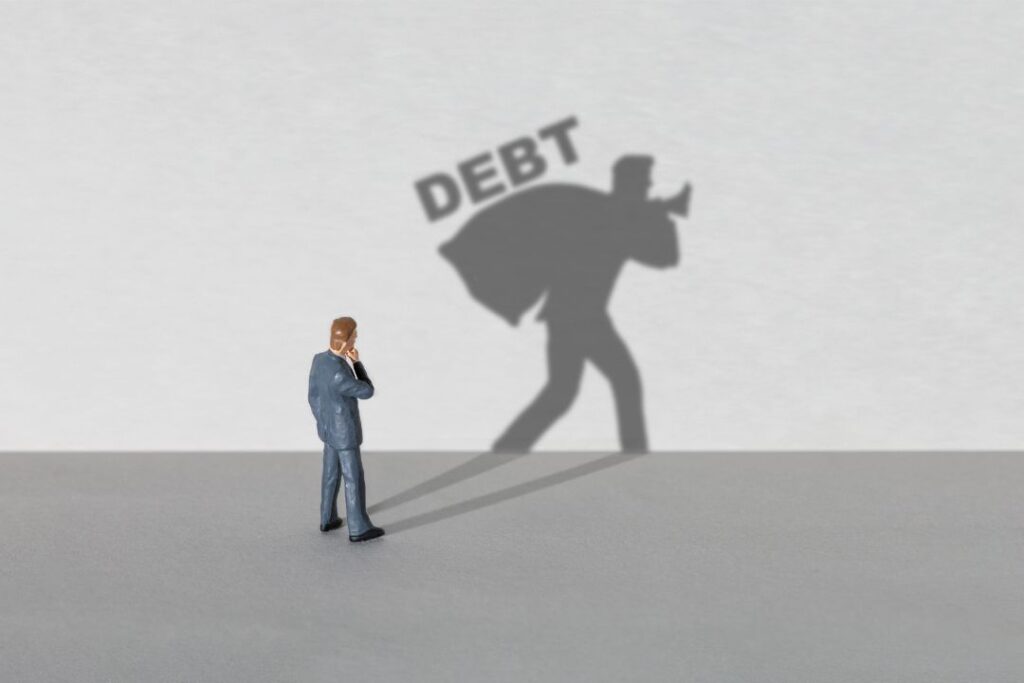Debt recycling is a powerful financial strategy that can play a crucial role in managing your debts effectively. By understanding the concept of debt recycling, implementing the right strategies, and identifying potential risks and challenges, you can make informed decisions to improve your financial situation.
Understanding the Concept of Debt Recycling
Debt recycling may sound like a complex concept, but at its core, it involves using your existing debt to create wealth-generating investments. The basic idea is to redirect non-deductible debt, such as a mortgage or personal loan, into deductible debt, such as an investment loan. This allows you to potentially reduce your tax liability while simultaneously building wealth.
Debt recycling is a financial strategy that has gained popularity among individuals who are looking to optimize their financial situation. By understanding the mechanics of debt recycling and implementing it effectively, you can make the most of your existing debt and turn it into a powerful tool for wealth creation.
The Basics of Debt Recycling
At its simplest level, debt recycling involves the following steps:
- Take out a new loan, such as an investment loan, using the equity in your property.
- Use the funds from the new loan to invest in income-generating assets, such as shares or property.
- Utilize any income generated from the investments to reduce your non-deductible debt, such as your mortgage.
- Repeat the process by redirecting the newly available equity to further investments, thereby recycling the debt and creating a compounding effect.
By following these steps, you can effectively leverage your existing debt to create a cycle of wealth creation. Debt recycling allows you to make your money work harder for you by using it to generate income and reduce your non-deductible debt simultaneously.
The Mechanics of Debt Recycling
To fully grasp the power of debt recycling, it’s important to understand its mechanics. By redirecting non-deductible debt into deductible debt, you effectively convert personal expenses into tax-deductible expenditures. This can potentially provide additional cash flow, reduce your tax liability, and increase your overall net worth.
When you redirect non-deductible debt, such as your mortgage, into deductible debt, such as an investment loan, you create a tax advantage. The interest paid on investment loans is generally tax-deductible, which means you can reduce your taxable income and potentially pay less in taxes. This can result in significant savings over time.
Furthermore, by using the income generated from your investments to reduce your non-deductible debt, you are effectively accelerating the repayment process. This can help you pay off your mortgage or personal loan sooner, freeing up even more cash flow for future investments.
Through disciplined planning and strategic investment choices, you can create a cycle of debt recycling that helps you build wealth while effectively managing your debts. It’s important to note that debt recycling is not a one-size-fits-all solution and requires careful consideration of your financial goals, risk tolerance, and investment strategy.
Consulting with a financial advisor who specializes in debt recycling can provide you with personalized guidance and help you navigate the complexities of this strategy. With the right approach, debt recycling can be a powerful tool for wealth creation and financial optimization.
The Role of Debt Recycling in Debt Management
Debt recycling is more than just a financial strategy. It can be a fundamental part of your overall debt management plan. By using your debts to create wealth, you can potentially accelerate your wealth-building process and achieve your financial goals faster.
Debt recycling involves leveraging your debts to generate additional income and potential capital gains. This strategy allows you to make your debts work for you, rather than being a burden. By strategically investing the funds borrowed through debt, you can create a diversified portfolio of investments, spreading your risks and potentially building wealth over time.
Debt Recycling as a Financial Strategy
As a financial strategy, debt recycling offers several advantages. Firstly, it allows you to make your debts work for you by leveraging them to generate additional income and potential capital gains. By investing the funds borrowed through debt into income-generating assets, such as stocks, bonds, or real estate, you can potentially increase your net worth over time.
Secondly, debt recycling can maximize the tax benefits you receive, helping to reduce your tax liability and increase your disposable income. By strategically structuring your investments and debt, you can take advantage of tax deductions and offsets, ultimately lowering your overall tax burden.
Moreover, debt recycling enables you to create a diversified portfolio of investments, spreading your risks and potentially building wealth over time. This strategy can be particularly beneficial for long-term investors who are willing to take a calculated approach to debt management.

Benefits of Debt Recycling in Debt Management
There are several benefits of incorporating debt recycling into your debt management plan. Firstly, it can potentially accelerate the repayment of your non-deductible debt by utilizing the income generated from your investment assets. This can lead to a faster path to financial freedom and a reduced debt burden.
- By recycling your debt, you can also potentially increase your net worth over time. As your investments grow and generate income, you have the opportunity to continually reinvest and build a larger asset base. This compounding effect can significantly contribute to your long-term wealth-building goals.
- Furthermore, debt recycling can help protect your wealth against inflation. By investing in assets that have the potential to grow in value and generate income, you have a greater chance of preserving your purchasing power and increasing your wealth in real terms. This can provide a hedge against the eroding effects of inflation and ensure the long-term sustainability of your financial well-being.
- Lastly, debt recycling can provide you with greater financial flexibility. By generating investment income that can be used to pay off non-deductible debt, you have the ability to adapt and adjust your financial plan as circumstances change. This flexibility allows you to respond to unexpected expenses or take advantage of new investment opportunities without being constrained by your debt obligations.
In conclusion, debt recycling is a powerful financial strategy that can enhance your debt management plan. By leveraging your debts to generate income and potential capital gains, you can accelerate your wealth-building process and achieve your financial goals faster. Additionally, debt recycling offers various benefits, including increased net worth, protection against inflation, and greater financial flexibility. Consider incorporating debt recycling into your overall financial strategy to optimize your debt management and pave the way for long-term financial success. By the clicking here you can read about Queensland housing finance loan.
Implementing Debt Recycling Strategies
Now that you understand the benefits and mechanics of debt recycling, let’s explore how you can start implementing this strategy to manage your debts effectively.
Steps to Start Debt Recycling
The first step in debt recycling is to assess your current financial situation. Evaluate your existing debts, income, and expenses to determine your capacity for debt recycling. Consider seeking professional advice from financial experts or advisors who can guide you through the process and help you make the best decisions based on your circumstances.
Once you have a clear understanding of your financial position, you can begin the process of restructuring your debts. This may involve refinancing your existing loans, establishing new investment loans, or utilizing other financial tools to redirect your non-deductible debt into deductible debt.
Key Considerations in Debt Recycling
As with any financial strategy, there are certain key considerations to keep in mind when implementing debt recycling:
- Be sure to carefully assess the risks involved in taking on additional debt. Consider your risk tolerance, investment objectives, and personal circumstances before proceeding.
- Research and select suitable investments that align with your financial goals. Diversify your portfolio to spread your risks and potentially increase your overall return on investment.
- Regularly review and adjust your debt recycling plan as needed. Monitor the performance of your investments, assess the tax implications, and make necessary adjustments to optimize your strategy.
- Consult with your financial advisor or accountant to ensure that you comply with all legal and tax regulations when implementing debt recycling strategies.
Risks and Challenges in Debt Recycling
While debt recycling can offer significant benefits, it’s essential to be aware of the potential risks and challenges associated with this strategy.
Potential Risks of Debt Recycling
One key risk of debt recycling is the possibility of market volatility. Investments can go up or down in value, and if the market experiences a downturn, it can impact the performance of your investments.
Additionally, taking on additional debt to invest carries financial risks. Market conditions, interest rates, and unexpected expenses can have an impact on your ability to meet your loan obligations and sustain your investment strategy.
Overcoming Challenges in Debt Recycling
To minimize risks and overcome challenges, it’s crucial to carefully assess your risk tolerance, diversify your investments, and have a contingency plan in place. Regularly review your investment strategy, maintain an emergency fund, and seek professional advice to navigate the complexities of debt recycling successfully.
Debt Recycling vs Other Debt Management Strategies
Debt recycling is just one of many debt management strategies available to individuals. Understanding how it compares to other options can help you make informed decisions about your financial future.
Comparing Debt Recycling with Other Strategies
Unlike debt consolidation, which involves combining multiple debts into a single loan, debt recycling focuses on leveraging your debts to create wealth. Debt consolidation aims to simplify your repayment process and potentially reduce interest payments, while debt recycling aims to maximize your financial opportunities and build long-term wealth.
Similarly, debt refinancing involves replacing your existing debts with a new loan, often with better terms or lower interest rates. While debt refinancing can help reduce your monthly payments, debt recycling aims to use the funds from new loans to create income-generating investments, potentially increasing your overall net worth.
Choosing the Right Debt Management Strategy
When it comes to choosing the right debt management strategy, there is no one-size-fits-all answer. It’s important to consider your individual financial goals, risk tolerance, and personal circumstances.
Debt recycling can be a powerful strategy for individuals who are willing to take a long-term and proactive approach to debt management. By utilizing the power of compounding and leveraging their debts, individuals can potentially accelerate their wealth-building process and achieve financial freedom.
Consulting with financial professionals and conducting thorough research can help you make informed decisions and choose the debt management strategy that aligns with your goals and objectives.
Ultimately, debt recycling can be a valuable tool in your financial arsenal, enabling you to manage your debts effectively while building wealth. By understanding the concept, implementing the right strategies, and mitigating potential risks, debt recycling can help you achieve your financial aspirations and secure a brighter future.
